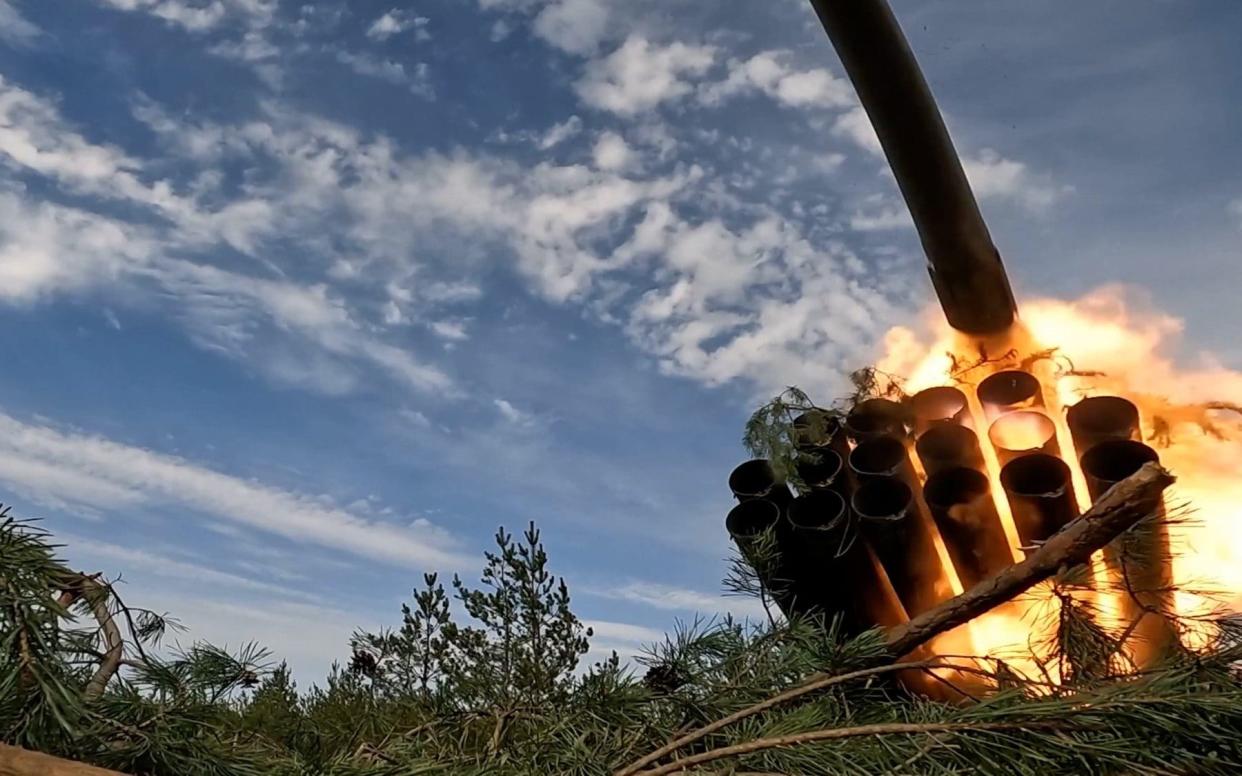Could the apparently failed attack on Kyiv force Russia to question its nuclear capabilities?

The missile attack on Kyiv on Monday night was described by Ukrainian authorities as “exceptional in its density”.
According to the Ministry of Defence in London, Russia launched a total of 27 missile and drone systems against Kyiv, including Kinzhal ballistic missiles, Kalibr cruise missiles, and Iranian-supplied Shahed drones.
However, perhaps more remarkable than the sheer rate of fire is Ukraine’s – and by association the West’s – ability to absorb it. Kyiv says it shot 100 per cent of the projectiles out of the sky, a claim impossible to verify at this stage.
What is clear is that most – if not all – were neutralised, severely undermining the alleged potency of Russia’s missile arsenal.
In addition, the events may force Russia’s nuclear strategists to ask uncomfortable questions.
Some of the missile systems that were probably intercepted in Monday night’s attack, including the much-touted Kinzhal hypersonic missile, are dual capable.
This means they can, in theory, be deployed in conventional or nuclear configurations, and constitute a cornerstone of Russia’s non-strategic, or tactical, nuclear arsenal.
Tactical nuclear weapons are primarily intended to achieve battlefield effect. For example, in the case of a hypothetical contingency, in which Russia is fighting a war with Nato, and Nato’s troops threaten to break Russian lines, Russia may conduct a tactical nuclear strike to halt Nato’s advance.
Given the apparent effectiveness of Ukraine’s missile defences against Russian short-range ballistic and cruise missiles, this may bring into question Russia’s ability to successfully deploy its tactical nuclear arsenal.
Russian propagandists have threatened the UK with missiles that can cause nuclear tidal waves to wipe out London.
This was always clearly an exaggeration but even Vladimir Putin himself has claimed the Kinzhal is unstoppable, saying in 2018 that it could “overcome all existing and, I think, prospective anti-aircraft and anti-missile defence systems”.
Russian decision makers may now start to question if they can bring their tactical nuclear weapons to their targets, if push comes to shove.
Importantly, this does not mean that this week’s events have nullified the potency of Russia’s overall nuclear deterrent. Russia remains, together with the United States, the largest nuclear power in the world, deploying a diverse arsenal of strategic nuclear weapons.
National security is usually discussed in terms of worst-case scenarios. This is especially the case when it comes to nuclear strategy. Nuclear weapons are, after all, the weapon of last resort and the ultimate guarantor of national sovereignty.
As such, the “what ifs” may loom a bit larger today in the Russian ministry of defence than usual.
Fabian Hoffmann is a missile technology expert and Doctoral Research Fellow at the University of Oslo

